Anatomy and Physiology: Brain, CNS, Spinal Cord
1/59
There's no tags or description
Looks like no tags are added yet.
Name | Mastery | Learn | Test | Matching | Spaced |
|---|
No study sessions yet.
60 Terms
What are the subdivisions of the brain?
Cerebrum (largest)
Diencephalon
Cerebellum
Brain Stem
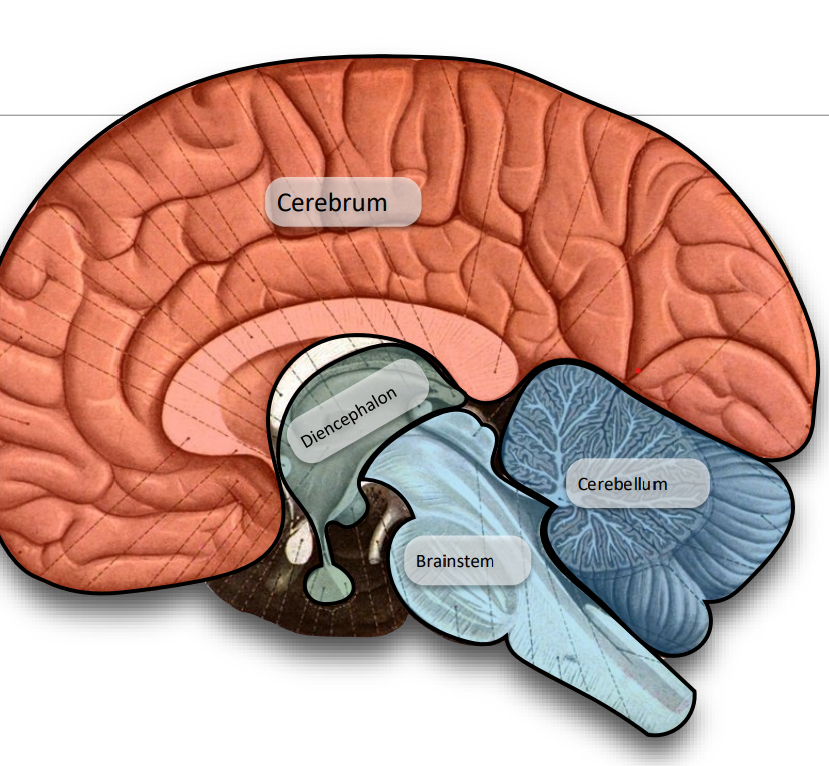
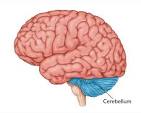
What is the function of the Cerebellum?
balance, posture
fine tuning motor function: timing and details, normal walking gait
sensory feedback leads to motor coordination
What are the sections of the Diencephalon?
Thalamus: all senses (except for smell) travel thru the thalamus
Hypothalamus: maintains homeostasis (temp, thirst)
Epithalamus/pineal gland: makes melatonin (sleep-wake cycle)
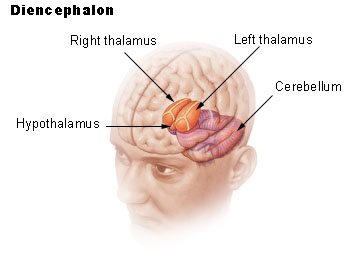
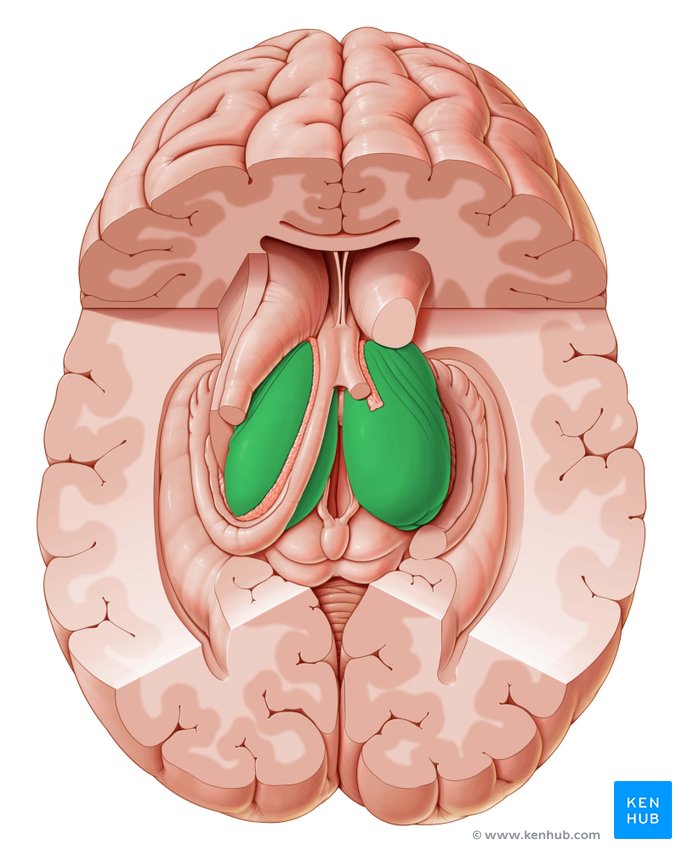
What is the function of the thalamus in the diencephalon?
to send info to appropriate cortex for interpretation
to send info for all senses EXCEPT SIGHT
to get info from spinal cord and brain
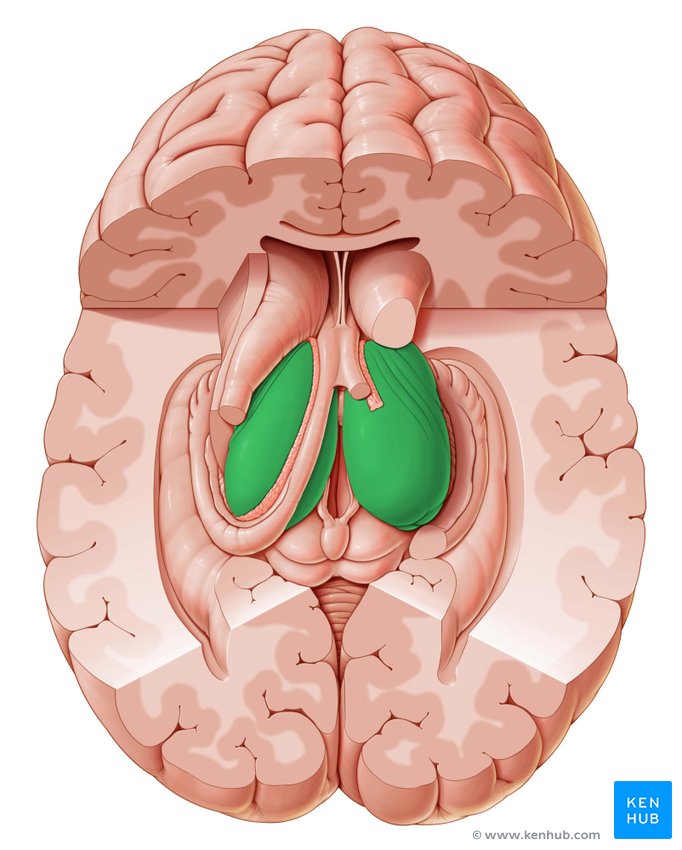
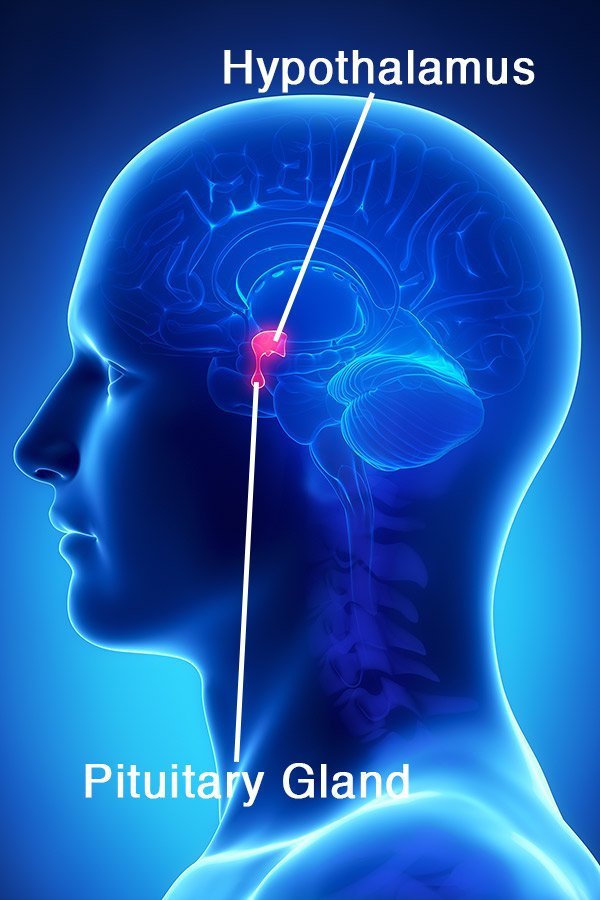
What is the function of the hypothalamus in the diencephalon?
helps with communication between nervous system and endocrine system
deals with heart rate, food/water intake, temp, sleep-wake, menstruation
releases hormones (communicates with endocrine system

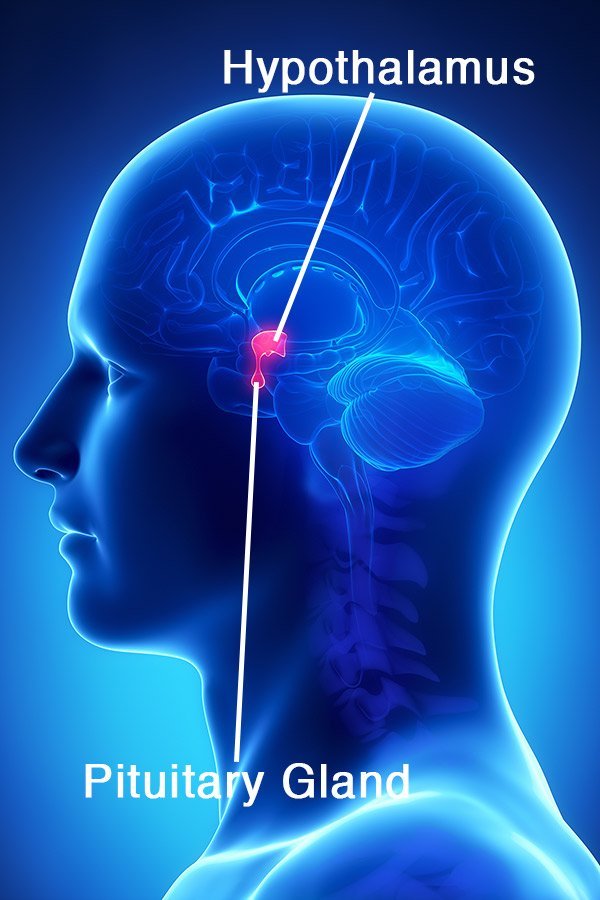
What is the role of the pituitary gland in the diencephalon?
releases hormones
connected to hypothalamus
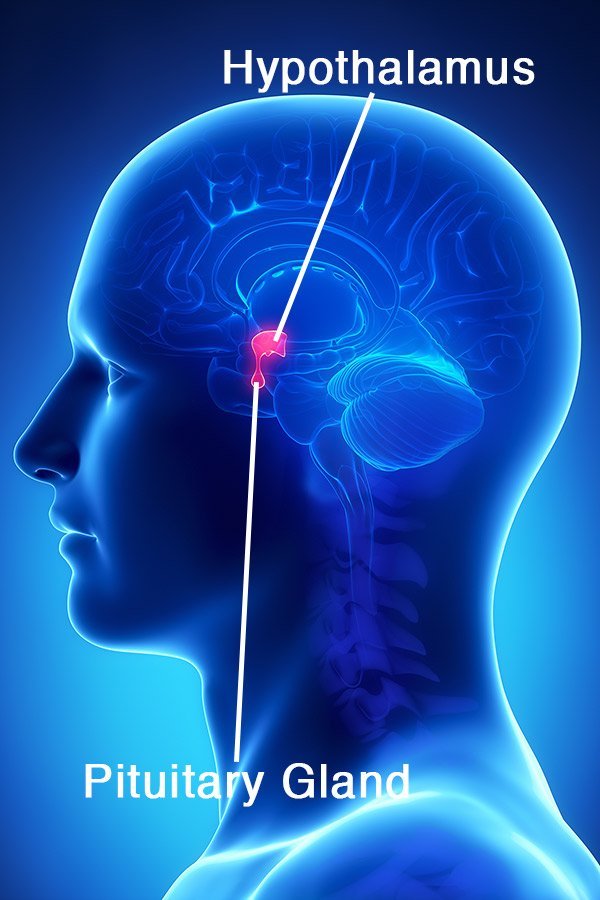
What are the bumps called on the cerebrum (largest subdivision of the brain)?
Gyri
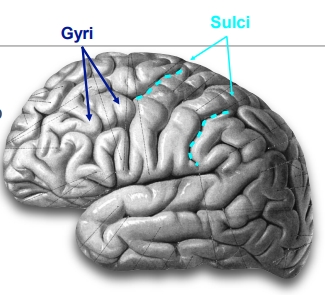
What are the grooves between the gyri called on the cerebrum (largest subdivision of the brain)?
Sulci
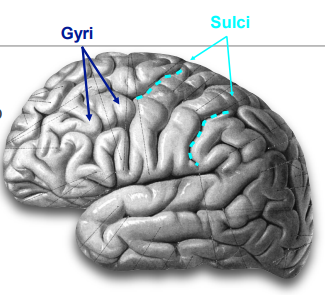
What is the left hemisphere of the brain GENERALLY used for?
logical tasks
What is the right hemisphere of the brain GENERALLY used for?
creative, non-language tasks (like piano)
What is gray matter (cerebrum)?
the cell bodies and dendrites of MOTOR NEURONS. Gray matter is the superficial layer of of the spaghetti gyri.
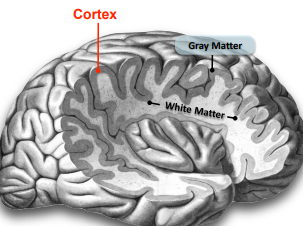
What is white matter (cerebrum)?
specific nerve tracts (collections of nerves with similar functions). It is deep to gray matter.
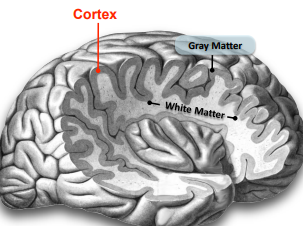
What are some examples of tracts that make up white matter?
Association tracts: a nerve connects 1 gyri to another gyri in the same hemisphere
Commissural tracts: nerves connect the right hemisphere to the left hemisphere
Projection tracts: nerves connect the cerebrum to some other place throughout the brain or spinal cord.
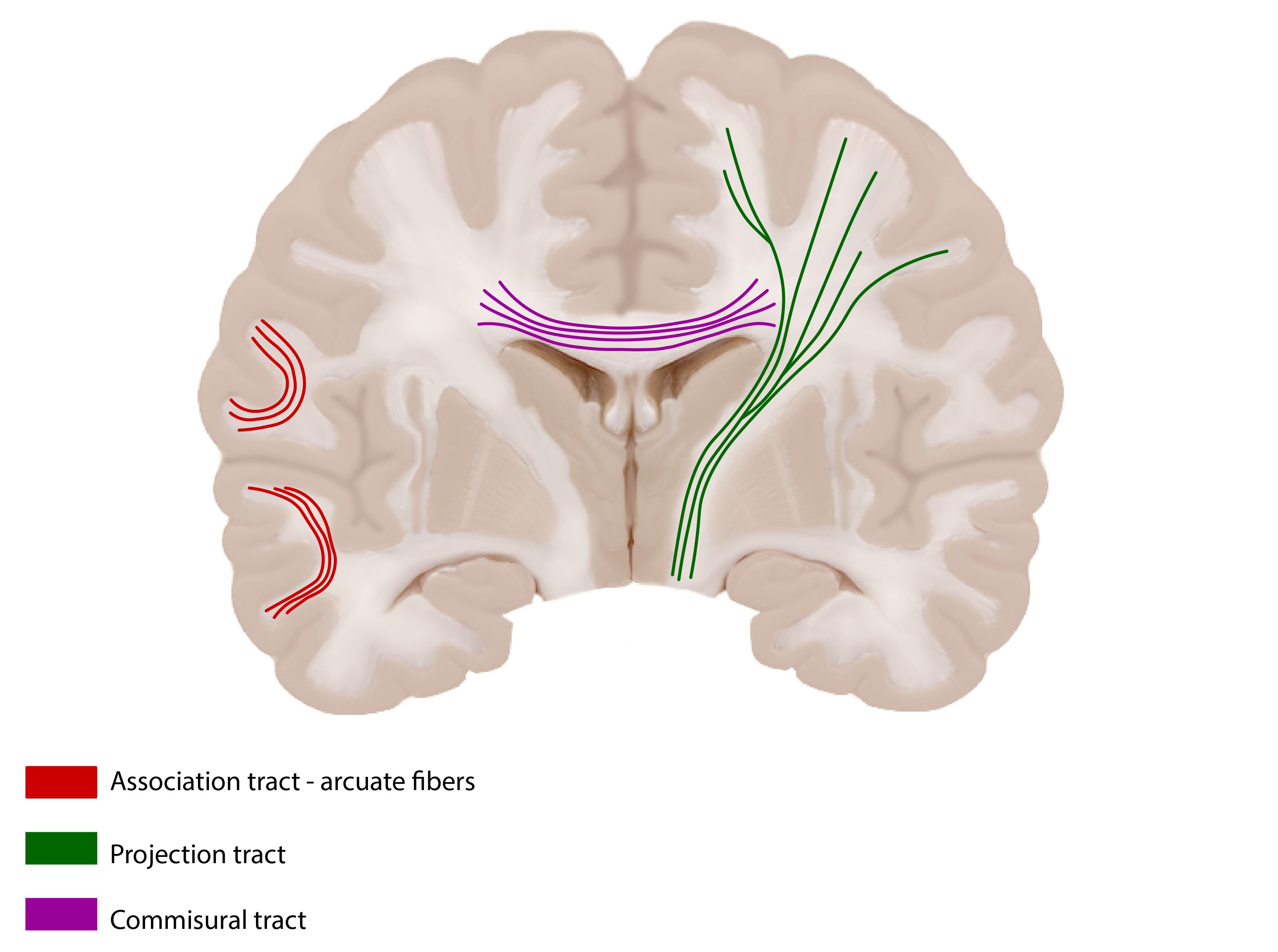
What are the lobes of the cerebrum (larges subdivision of the brain)?
Frontal lobe
Parietal lobe
Temporal lobe
Occipital lobe
Insular lobe
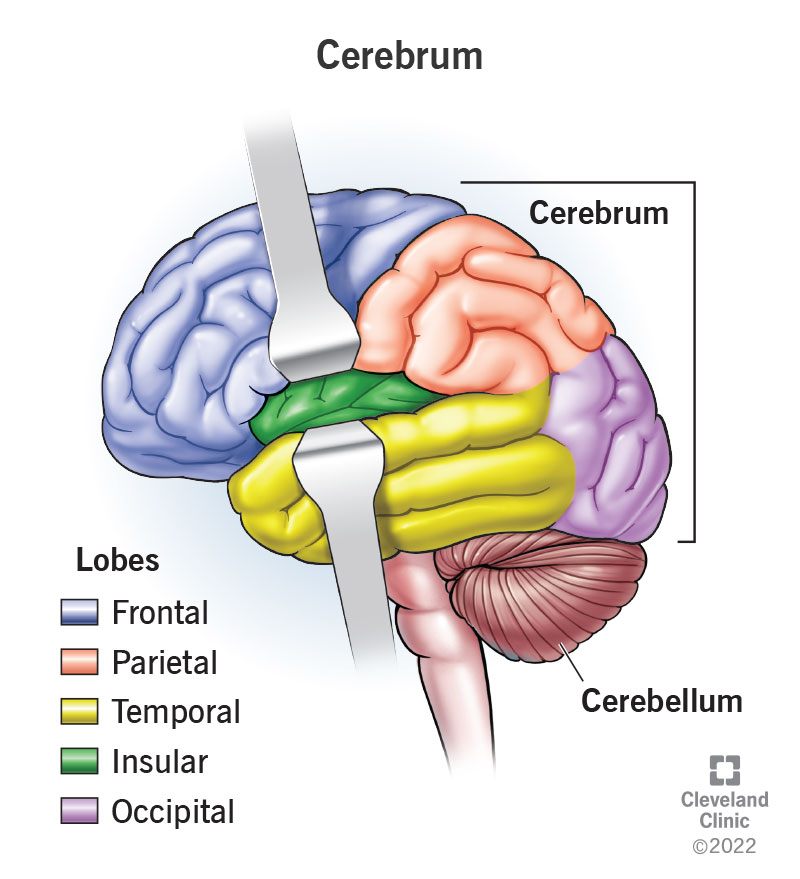
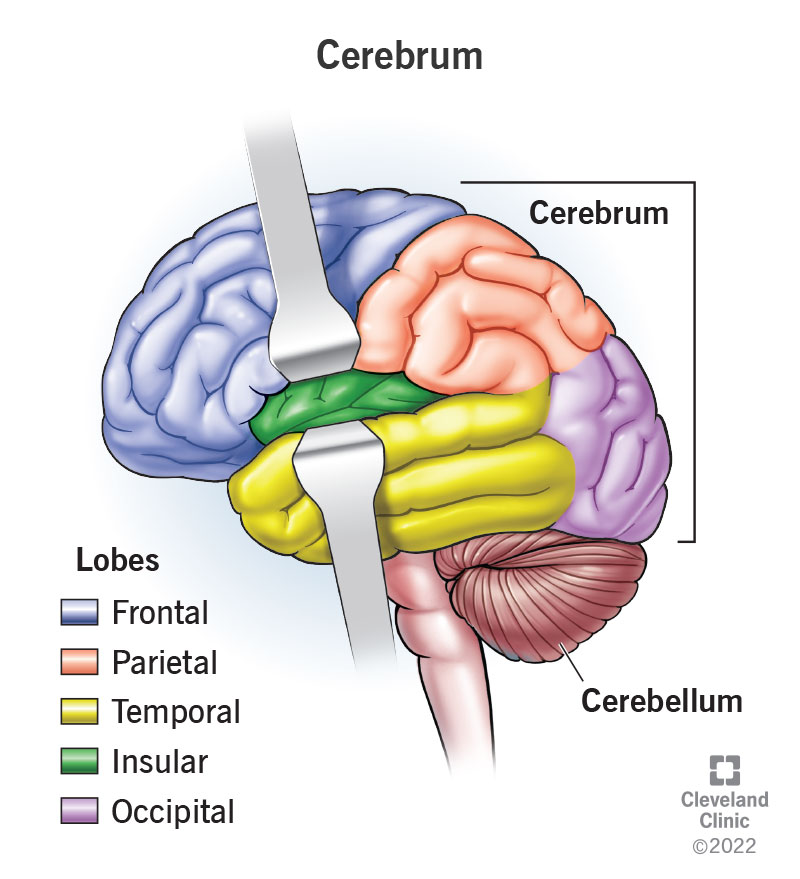
What does the frontal lobe do (cerebrum)
thinking, reasoning
emotions, personality
speech (Broca’s area)
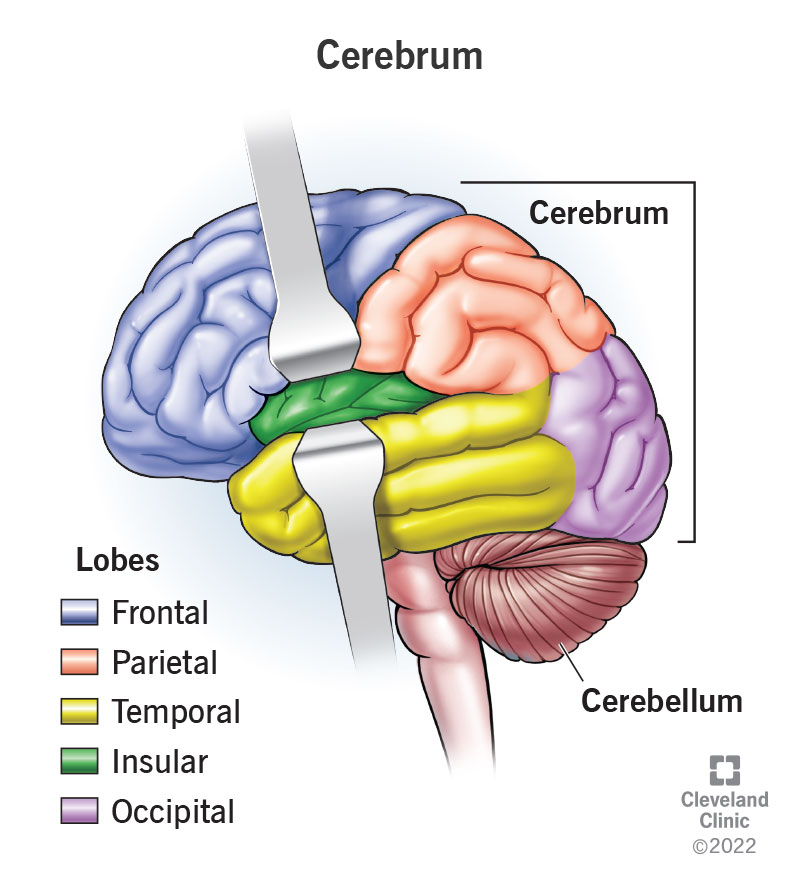
What are some cortices in the frontal lobe of the cerebrum?
Motor cortex: movement of skeletal muscles
Broca’s motor speech area: speech production, language processing
Prefrontal cortex: behavior, motivation, goal setting
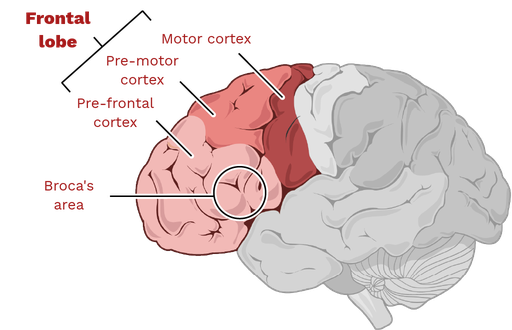
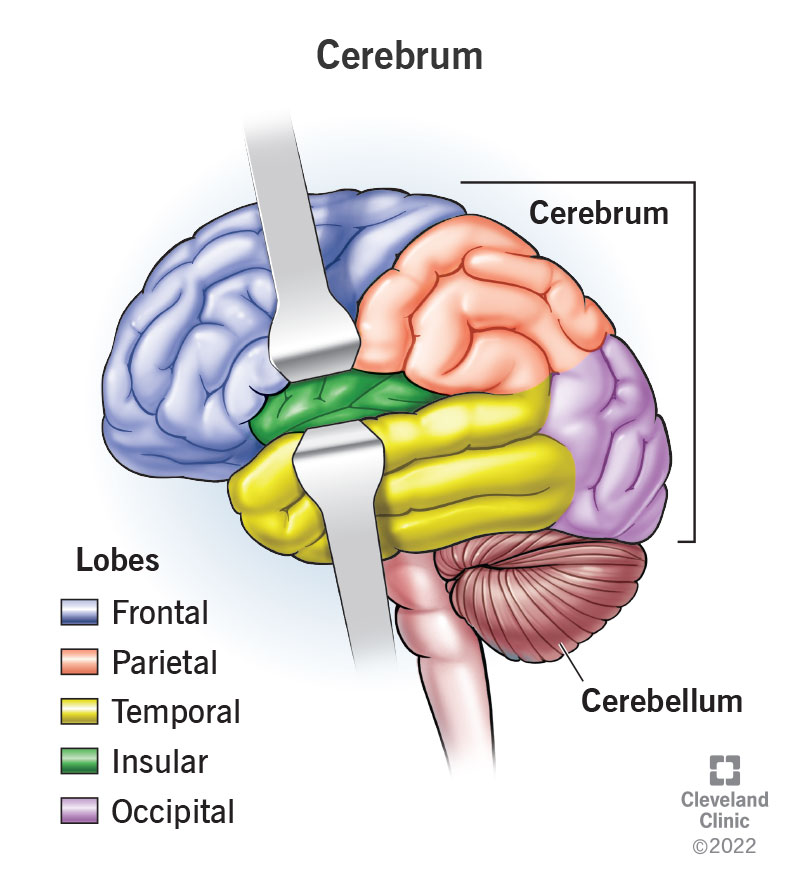
What does the parietal lobe do in the cerebrum?
touch, pressure, temp (sensory stuff)
some taste stuff
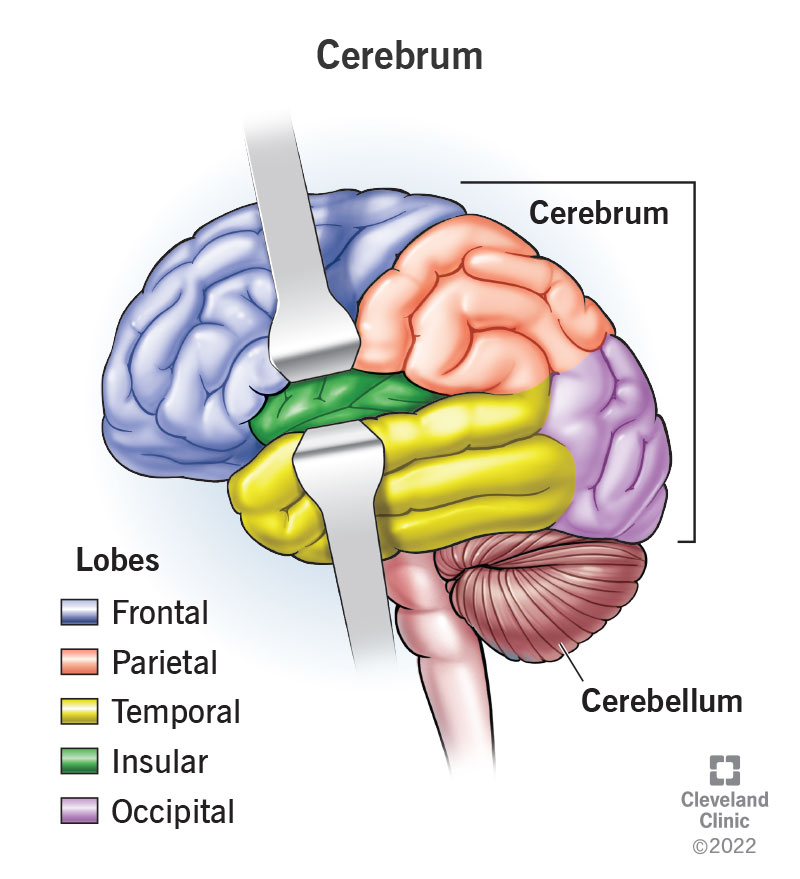
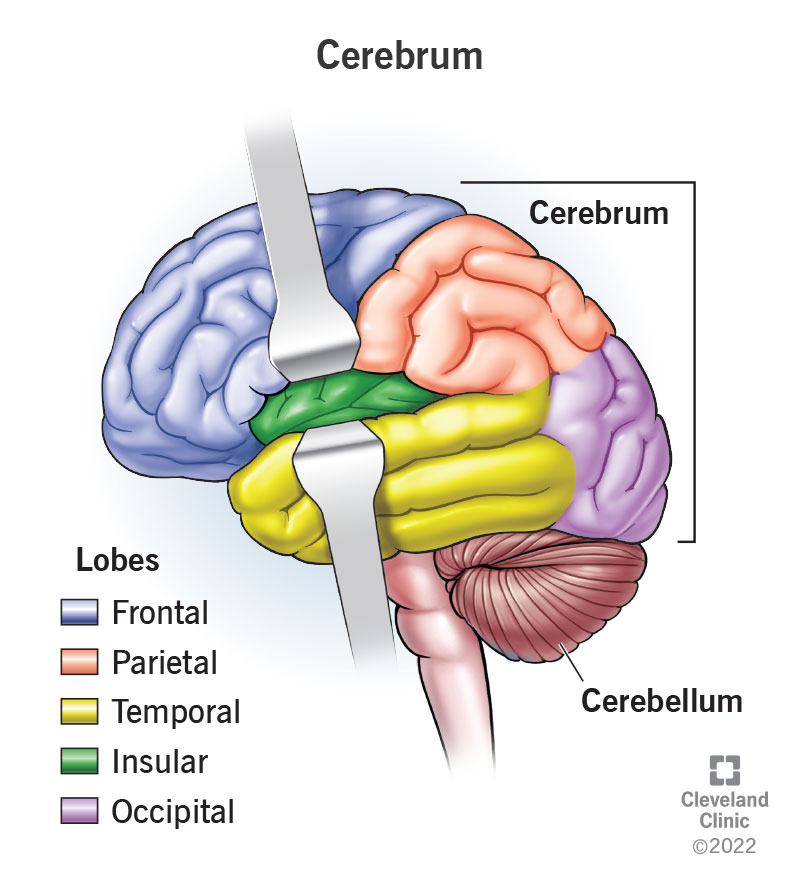
What does the temporal lobe in the cerebrum do?
hearing/sound sensory input
Wernicke’s area: speech/language understanding
some taste
primary smell sensing area
memory
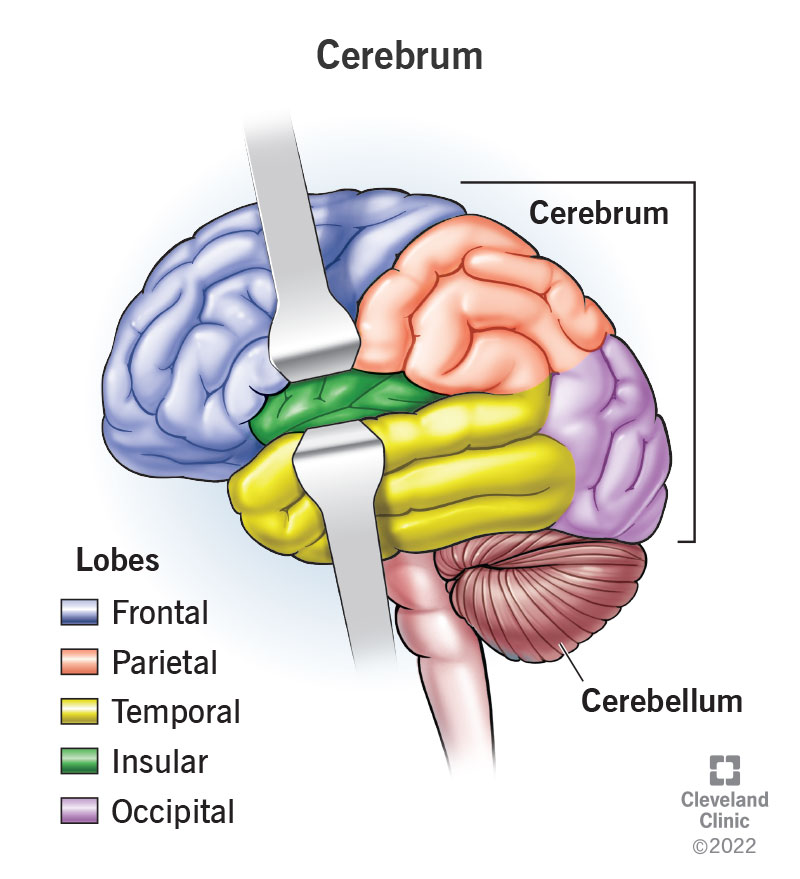
What is Broca’s and Wernicke’s aphasia?
Broca’s aphasia: slow, poorly articulated speech; speech understanding isn’t impaired
Wernicke’s aphasia: fast speech, word salad; spoken/written comprehension is destroyed
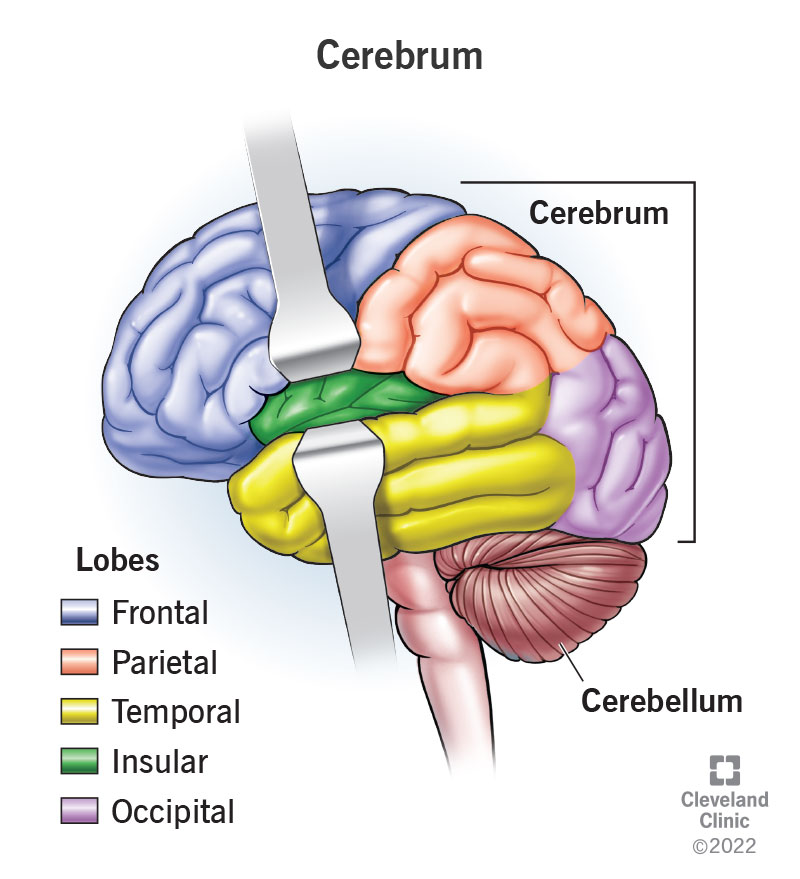
What does the occipital lobe do in the cerebrum?
visual processing (stating and moving objects)spatial orientation
color, speed, direction of a moving object
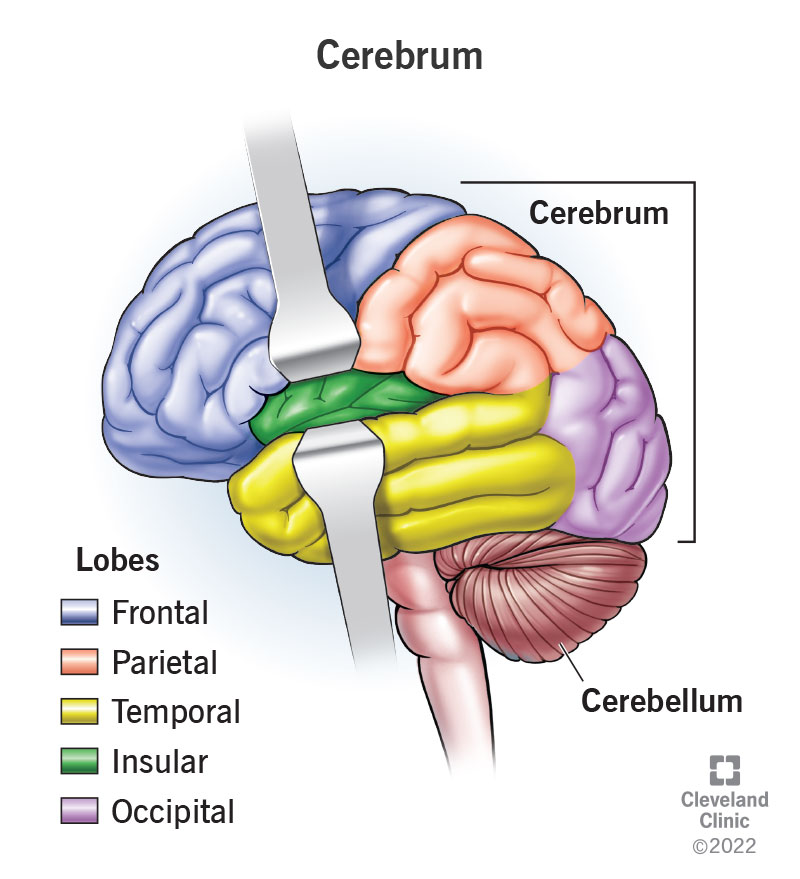
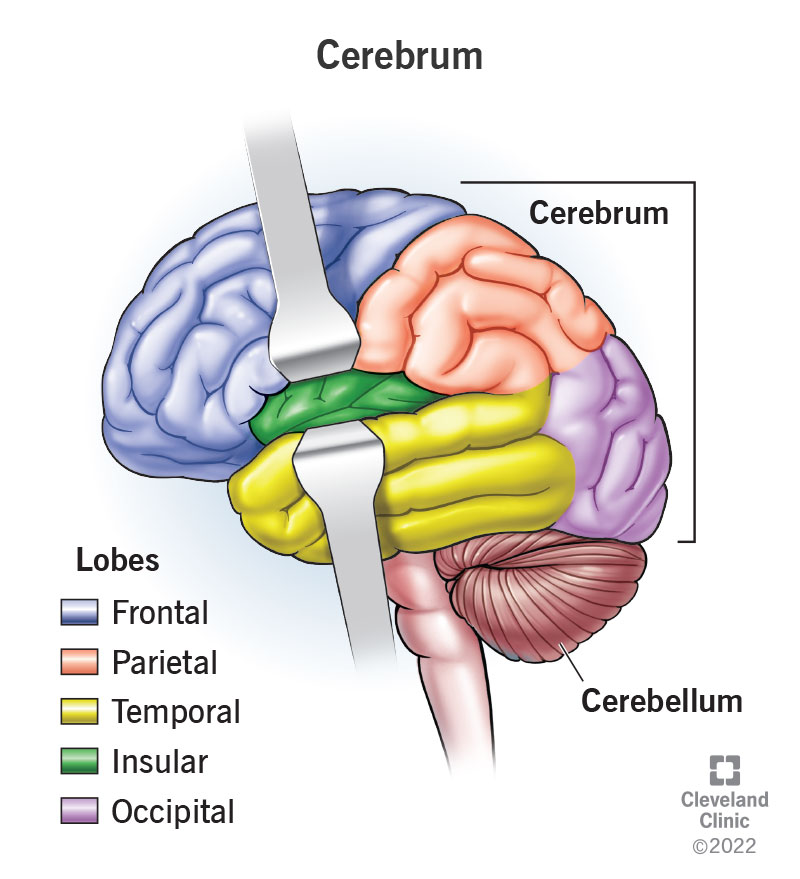
What does the Insular lobe do in the cerebrum?
smell memory
has basal nuclei/basal ganglia (cluster of nuclei deep in the brain)
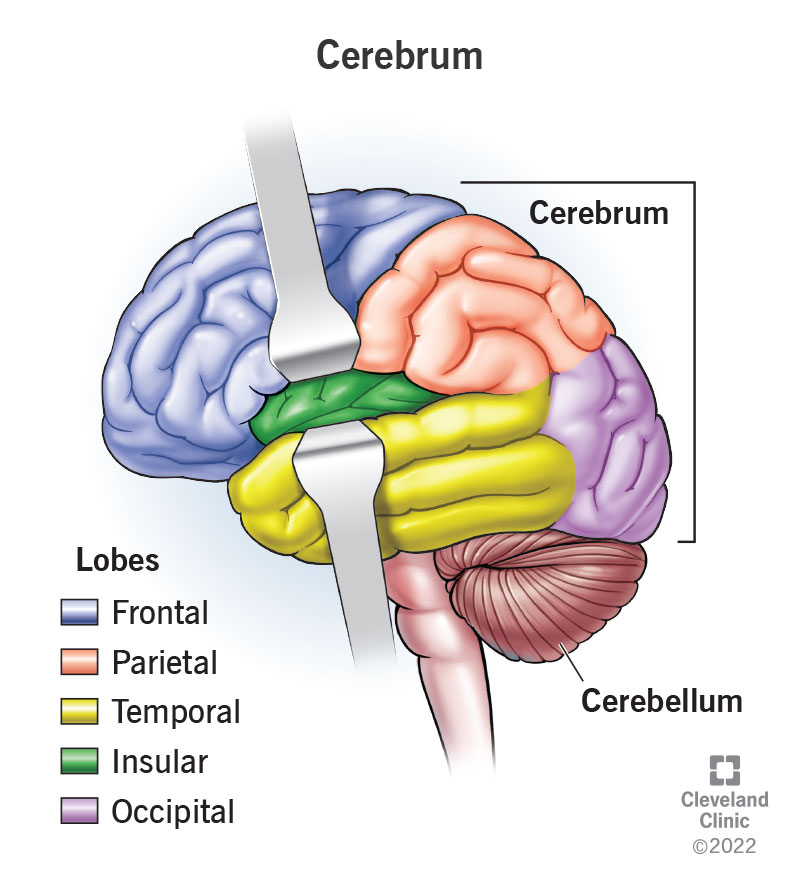
What are basal nuclei/ganglia?
areas of gray matter
deep in the brain
works with motor cortex to start motions
prohibits muscles from moving that aren’t needed for a particular action (subconscious muscle control like swinging my arms when I’m walking)
If the basal nuclei/ganglia arean’t working properly, what are the conditions that can arise?
Chorea: jerky movements without purpose
Athetosis: slow (non jerky) movements
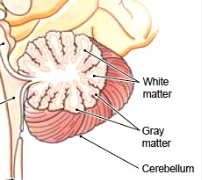
What is gray matter called in the CEREBELLUM?
cortex; superficial
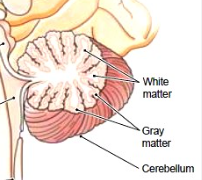
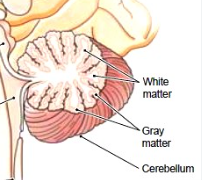
What is white matter called in the CEREBELLUM?
arbor vitae; deep(looks a bit like a shrub)
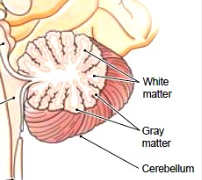
What is Ataxia (it’s a sign, not a disease)?
damage to cerebellum or sensory structure that causes clumsy, unbalanced movements. Can cause intention tremors (tremors during movement)
What is the limbic system?
“emotional brain”
reward/punishment
visceral responses??
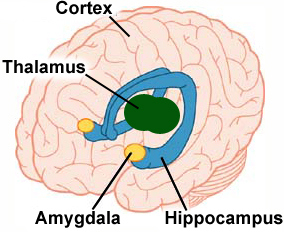
What are the structures that make up the limbic system?
amygdala
hippocampus
thalamus
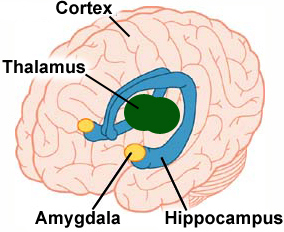
What and where is the amygdala (part of limbic system)?
helps identify danger
within temporal lobe
love, fear, rage, anxiety
storage of short-term memories
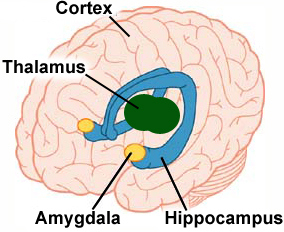
What and where is the hippocampus?
smell and sound memories
spatial orientation
in cerebral cortex
compares past and present threats to decide if there is possible danger
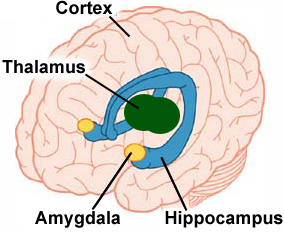
What are the sections of the brainstem?
midbrain: made of basal nuclei, has motor tracts
medulla oblongata: regulates heart rate, breathing, sneezing, vomit, BP
pons: bridge between medulla and midbrain
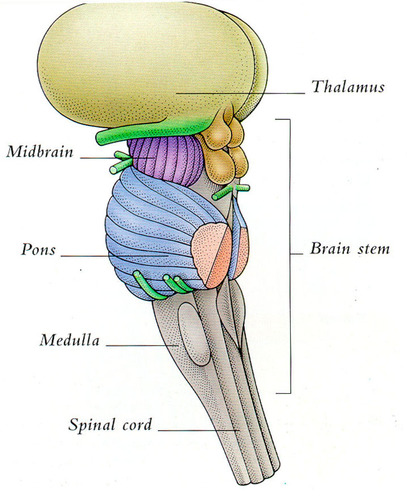
What are the three sections of gray matter in the spinal cord?
posterior horn: sensory neurons
anterior horn: motor neurons
lateral horn: sympathetic neurons (thoracic and lumbar vertebrae ONLY!)
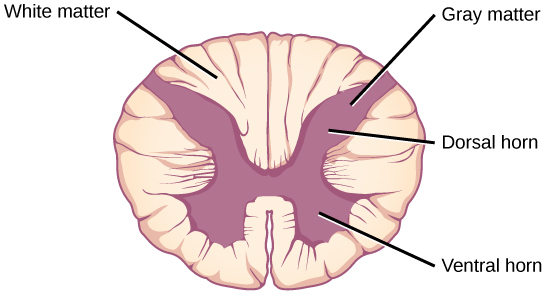
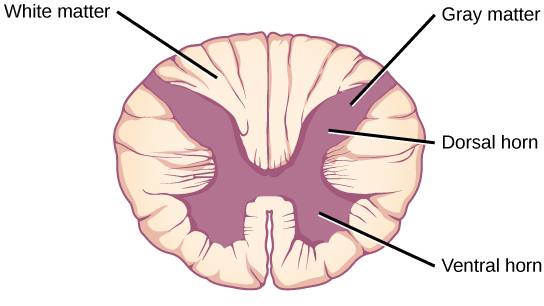
What are the two sections of white matter in the spinal cord?
Ascending tracts: gets sensory info to the brain thru sensory neurons in the posterior horn
Descending tracts: motor info moves down the spinal cord through motor neurons int the anterior horn
What and where is the spinal cord?
from the brain to L1 vertebra
in vertebral column in vertebra
made of gray and white matter
central canal has CSF and is the very center of the spinal cord
What are components of a reflex arc?
sensory neuron
effector (skeletal muscle)
receptor (on the skin?)
control center/ interneuron
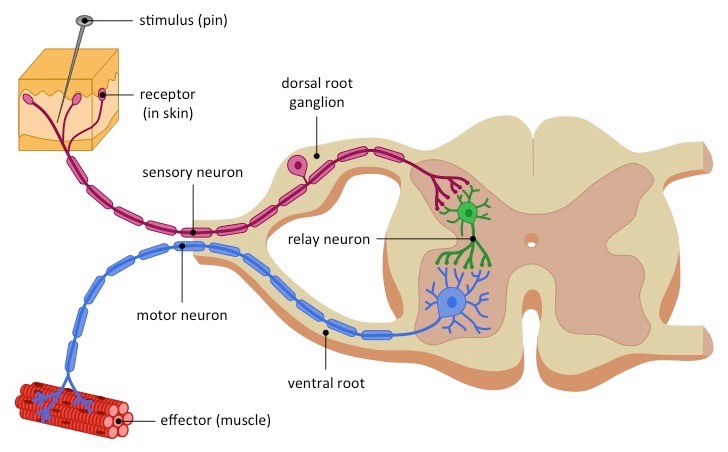
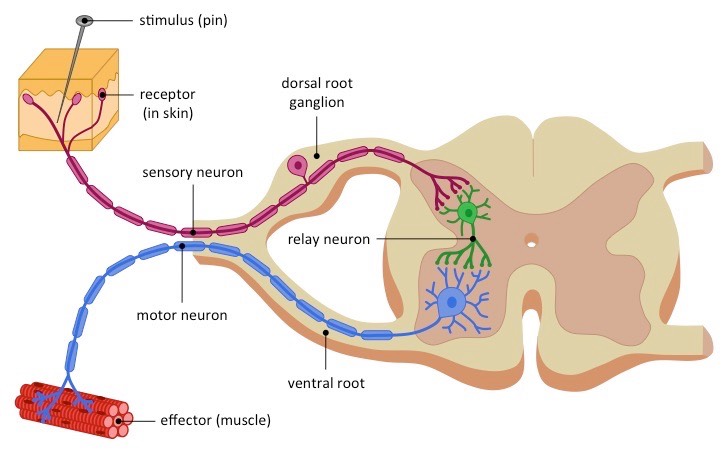
What are some examples of a reflex arc?
knee jerk
poop and pee
everyone’s reflex arcs present the same (we all react the same to a medical hammer to our knee; everyone’s knee jerks up)
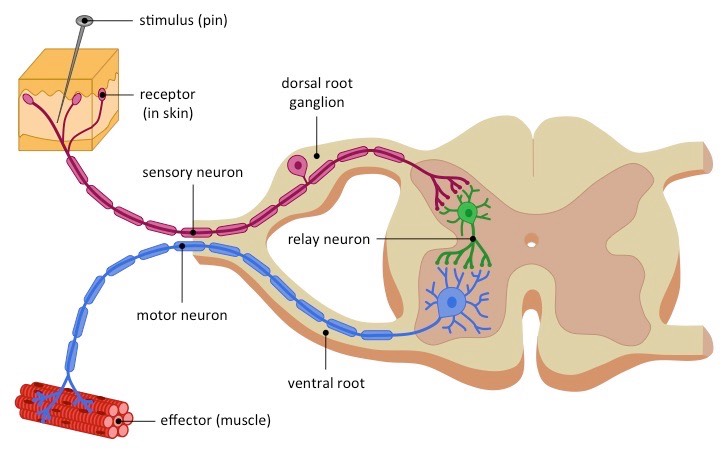
What are the meninges?
connective tissue around the brain and spinal cord
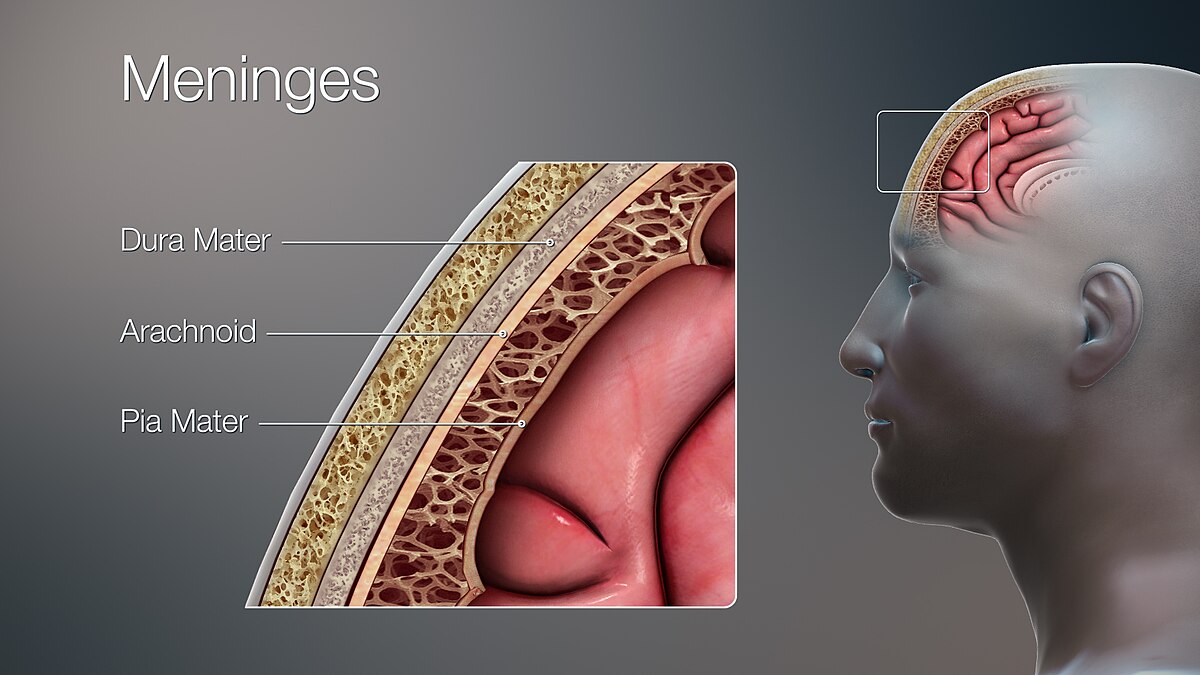
What are the three layers of the meninges?
Dura mater
Arachnoid mater
Pia mater
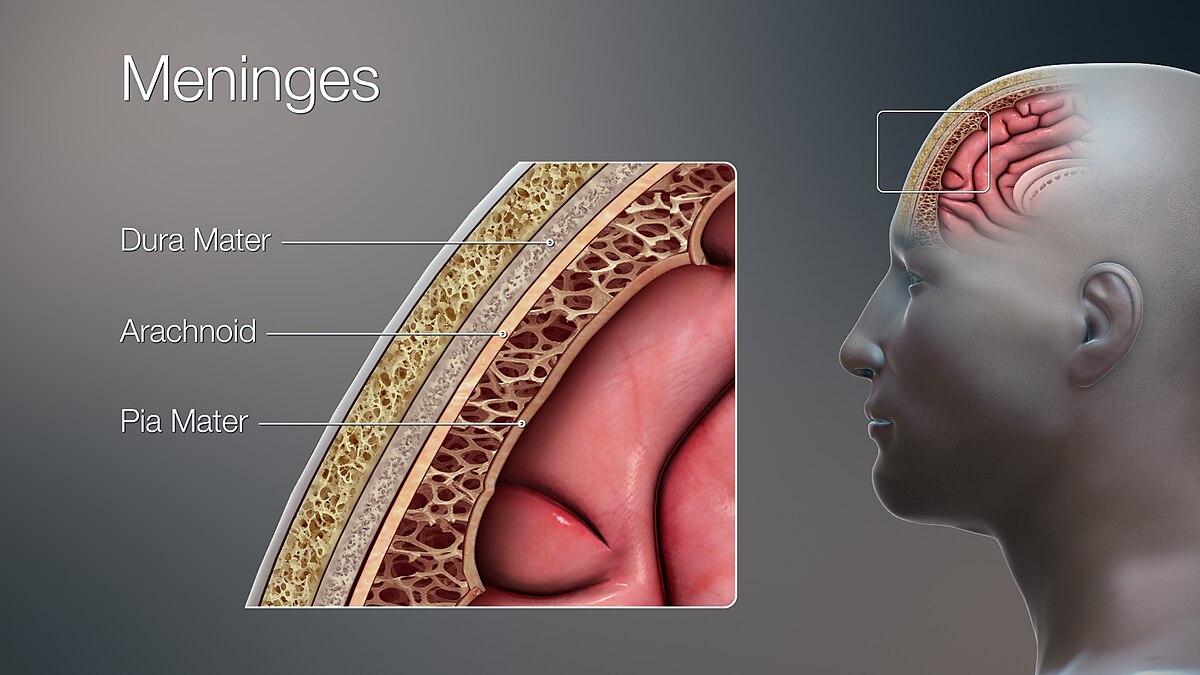
Where is the dura mater, and what does it do?
most superficial layer
attaches to the interior of the skull
has 2 layers:
periosteal layer: superficial layer on the surface of cranial bones
meningeal layer: fused with periosteal layer, but where it seperates it creates sinuses or “dural spaces”
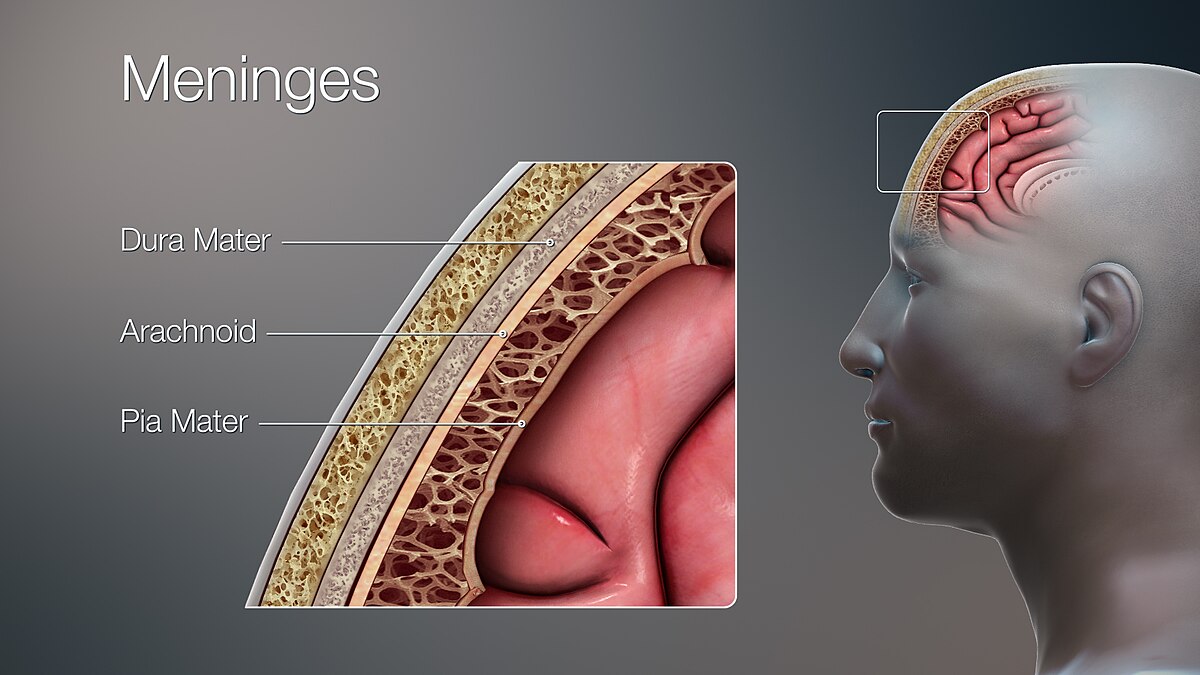
where is the arachnoid mater, and what does it do?
middle meninges layer
looks like a cobweb appearance
made of collagen and elastic fibers
subarachnoid space: spinal fluid in cerebral arteries and veins??
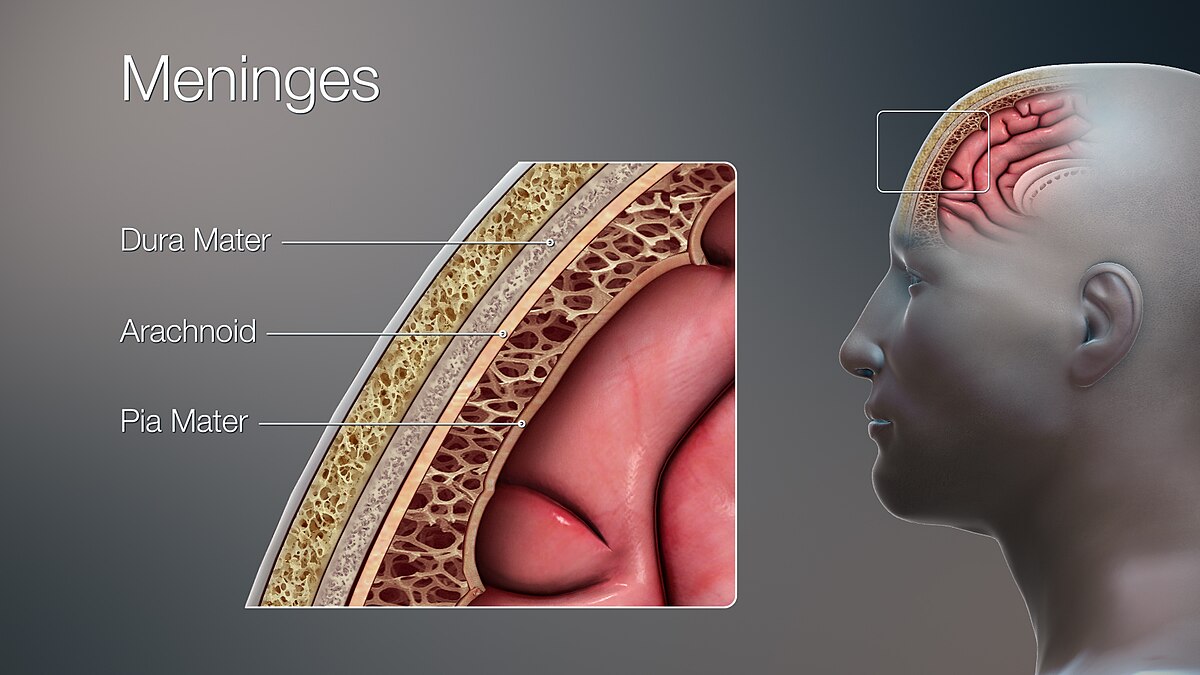
What is the pia mater and what does it do?
deepest layer of the meninges
attaches to brain tissue
helps form spinal fluid
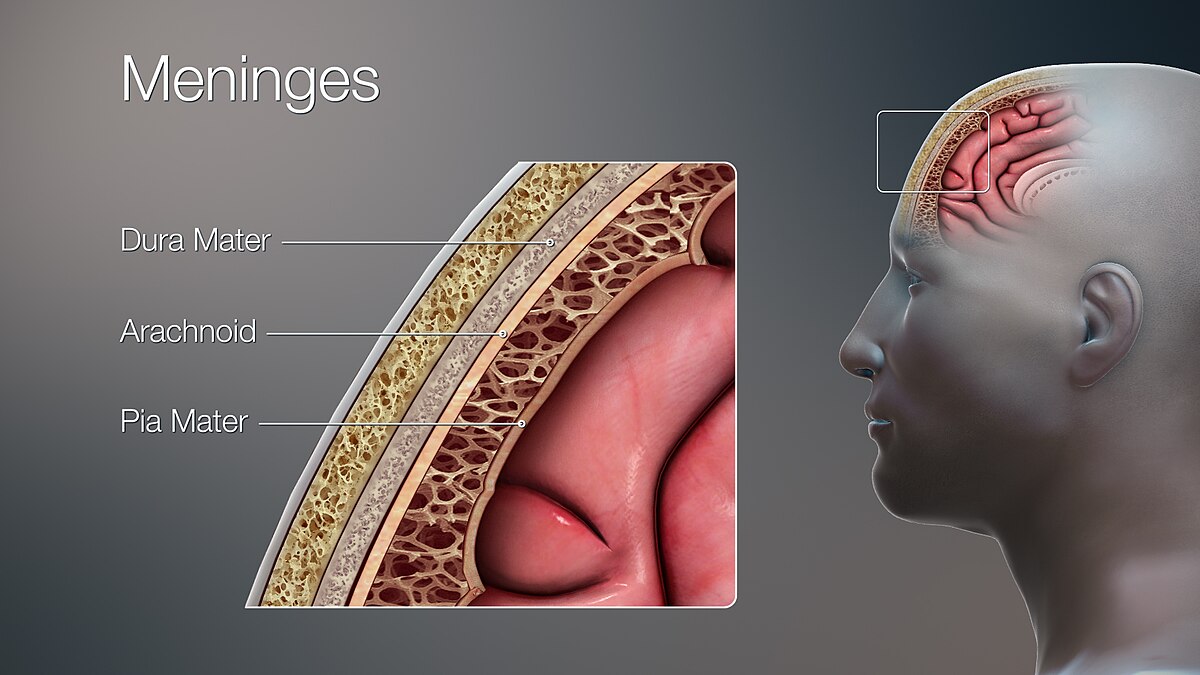
What are the functions of the meninges?
covers and projects brain
creates cerebrospinal fluid
keeps brain and spinal cord from moving too much
protects blood vessels
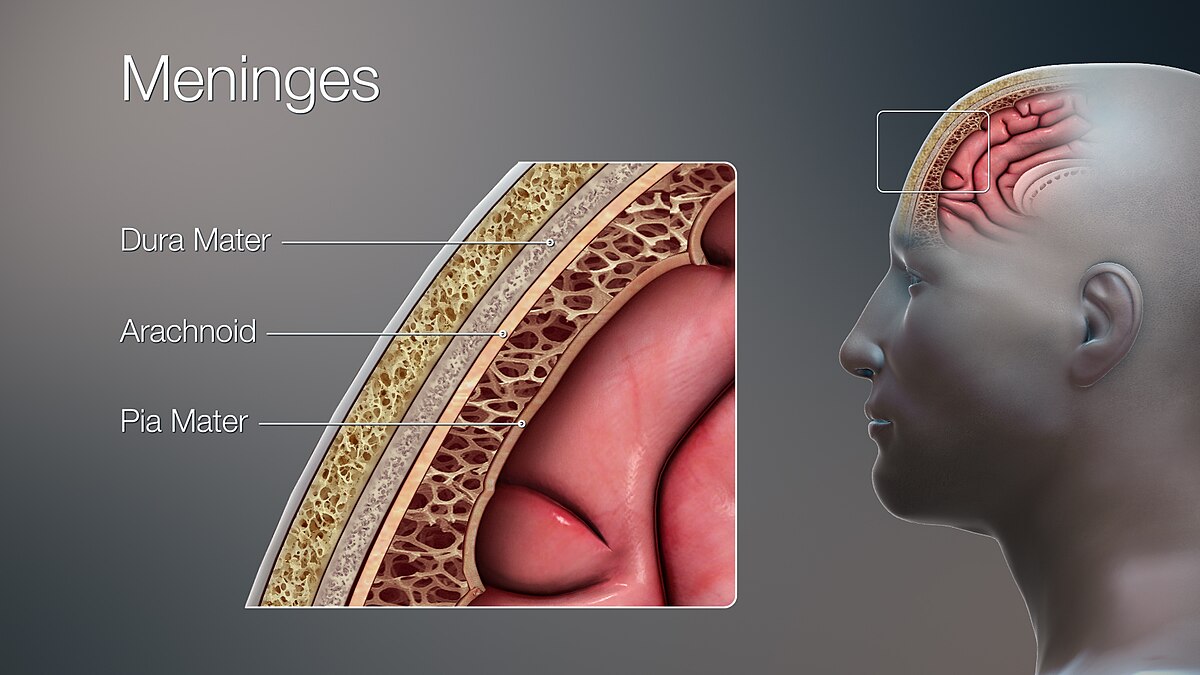
What are hematomas?
They are brain injuries affecting layers of the meninges. They’re caused by too much pressure in the skull, head injuries, or vessel rupture
Epidural hematoma: blood between skull and dura mater
Subdural hematoma: blood between arachnoid and dura mater
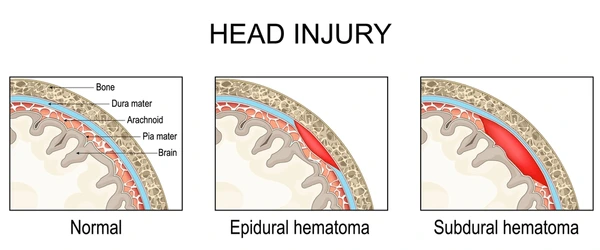
Where is cerebrosional fluid (CSF) found?
around brain and spinal cord
in subarachnoid space and ventricles
CAN cross the blood brain barrier (BBB)
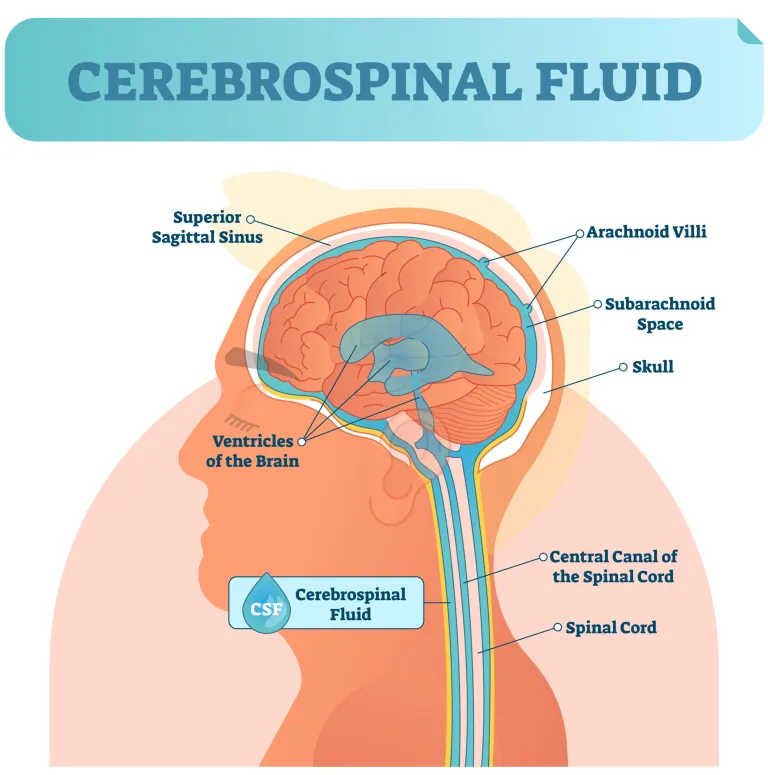
Where does cerebrospinal fluid come from?
blood plasma; made by choroid plexus (ependymal cells, capillaries)
HAS: Oxygen, ions, glucose
DOESN”T have: blood cells, plasma proteins, platelets
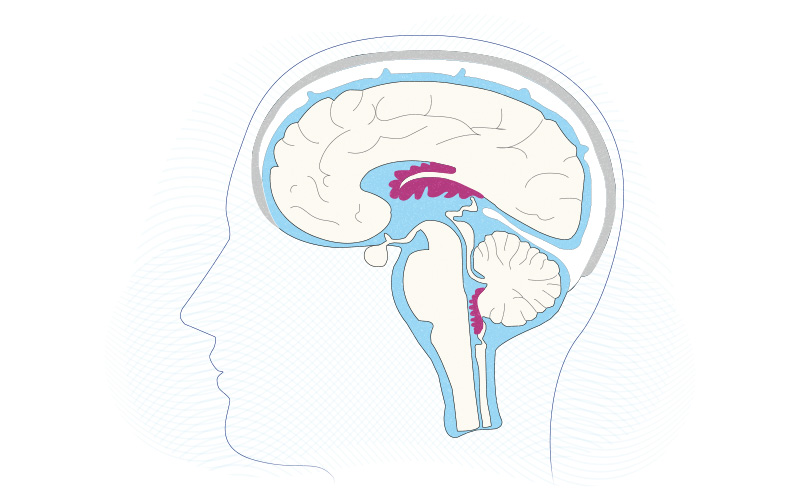
What makes up the blood-brain barrier (BBB)?
blood capillary wall
pia mater
ependymal cells
What is the function of the blood brain barrier (BBB)?
to allow certain things to get to the brain, and to keep other things out. Water, glucose, oxygen, carbon dioxide, alcohol, caffein, nicotine, and some anesthetics can all cross the BBB
What are ventricles in the brain?
there are 4
deep in the brain
lateral ventricles (2), 3rd ventricle, 4th ventricle
circulate cerebrospinal fluid
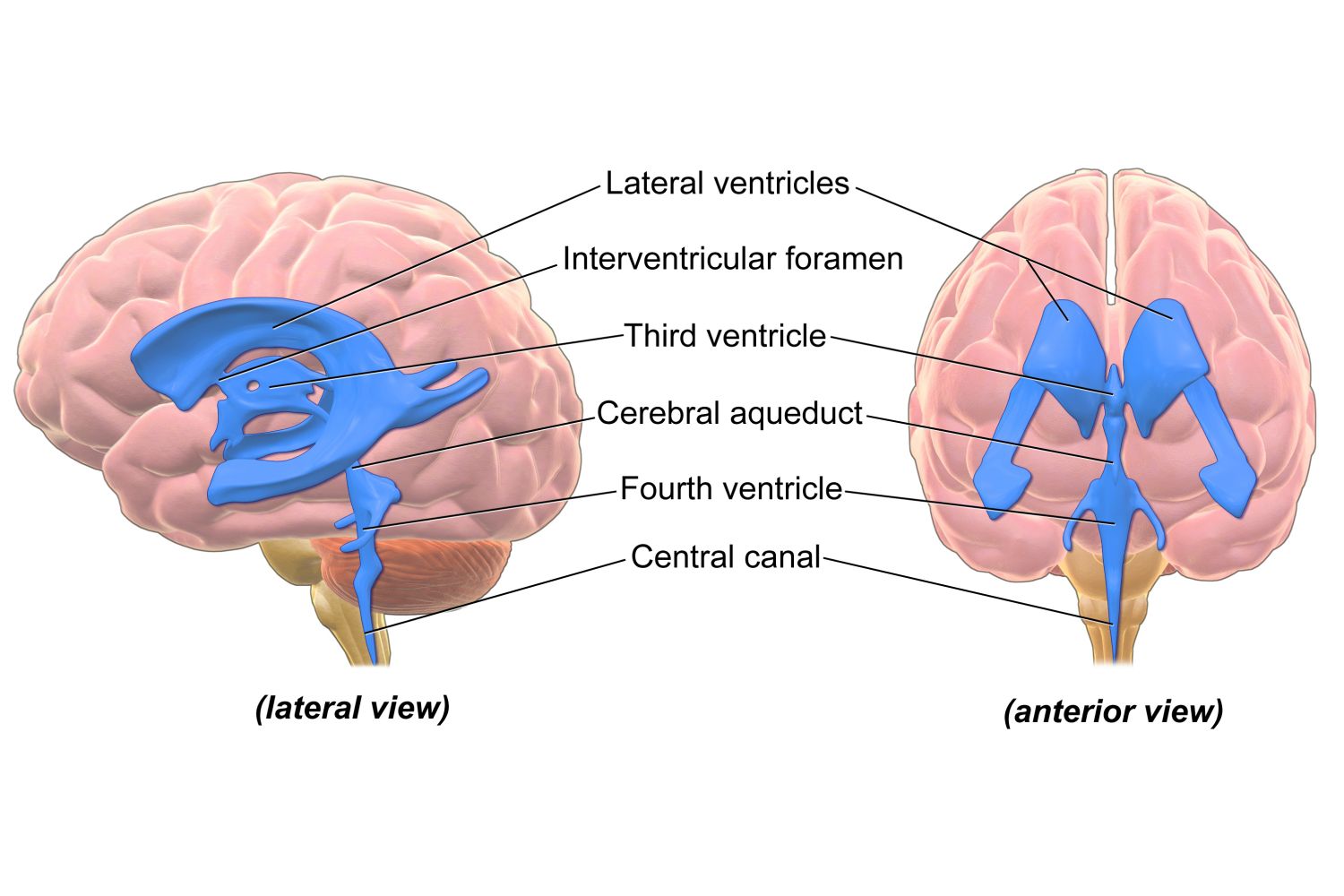
What is the flow of cerebrospinal fluid?
1.) CSF made in the lateral ventricle/choroid plexus
2.) moves to 3rd ventricle
3.) moves to the cerebral aqueduct
4.) moves to the 4th ventricle
5.) some CSF moves down spinal cord; most ends up in the subarachnoid space
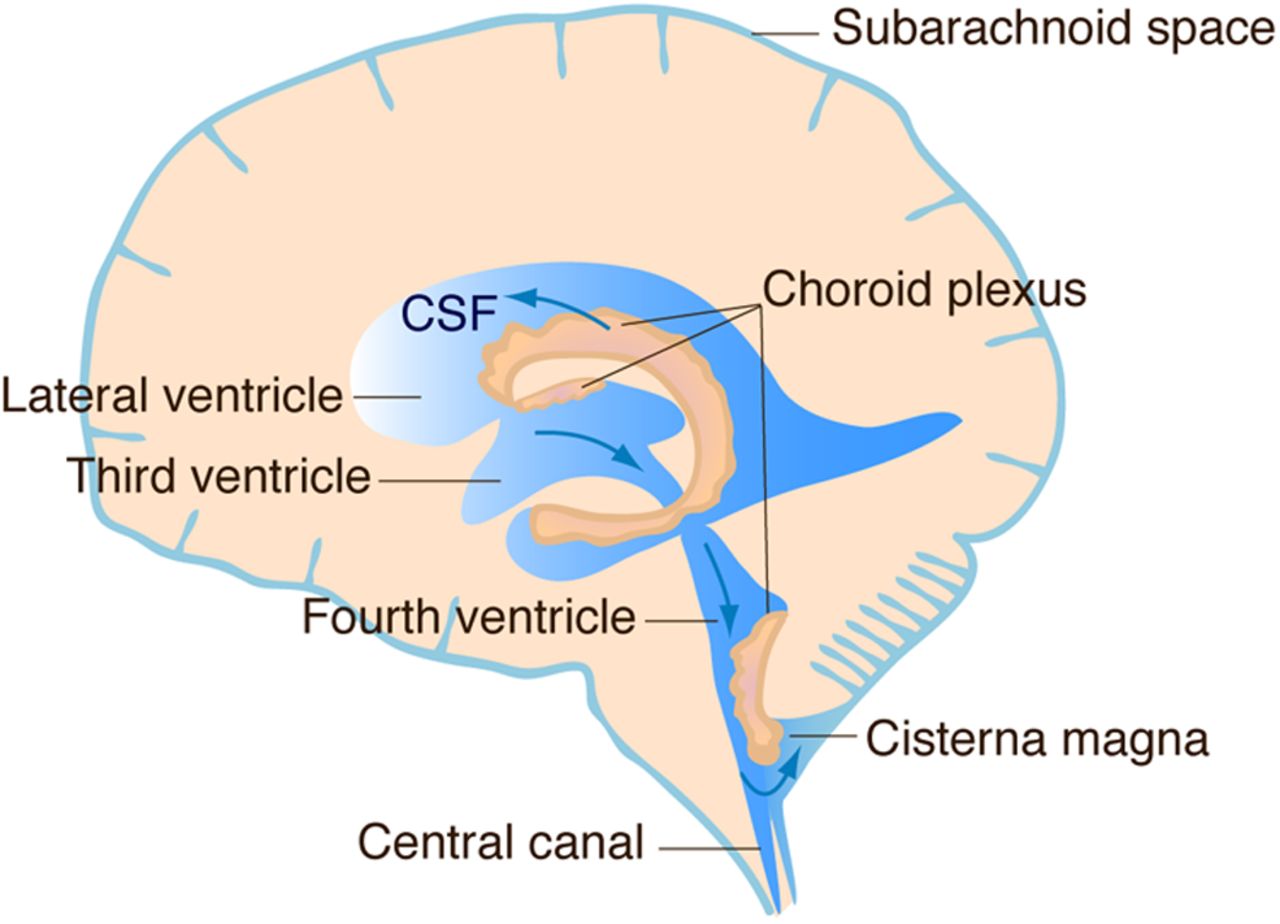
What is hydrocephalus?
excess CSF
causes big/ distorted head
causes pressure in the skull in adults because their skull can’t expand like young childrens’ can
a shunt is placed to relieve the excess pressure
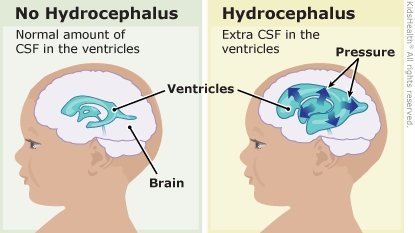
What is a stroke?
bleeding arteries or blocked brain tissues causes brain cells to die from lack of oxygen.
What are the types of strokes?
Thrombotic: plaque build-up in arteries
Transient Ischemic Attach (TIA): fleeting blockage in an artery (can resolve on it’s own)
Embolic: blood clot lodges in vessel
Hemorrhagic: from increased BP, head trauma, or ruptured aneurysm
What are the symptoms of a stroke?
weak/paralyzed limbs
sensory loss (vision, pain, temp sensation)
symptoms can vary by the artery affected
What are the risk factors for a stroke?
hx or high BP
smoking
diabetes
decreased heart function
What are the types of concussions?
Mild: no loss of consciousness, decreased attention, loss of memory of event
Classical cerebral: unconsciousness, amnesia
Mild diffuse: coma lasting up to 24 hours
Moderate diffuse: most never recover
Severe diffuse: primary brainstem injury, widespread damage; often lethal
What is Alzheimer’s Disease?
Proteins collect in CNS neurons causing memory loss. There isn’t enough acetylcholine in the synapse to properly relay messages between neurons. It’s a progressive disease where more and more of the brain is affected
What is Epilepsy?
Irregular, recurrent electrical discharges in the brain (seizures). Causes motor, sensory, and psychological malfunctions. Can be caused by stroke, head trauma, or disease. Nowadays, there are really good anticonvulsants that limit the effect of seizures.
What is Amyotrophic lateral sclerosis?
A genetic disorder that causes muscle weakness and muscle atrophy. The motor neuron system breaks down which eventually causes paralysis. Physical therapy can help.
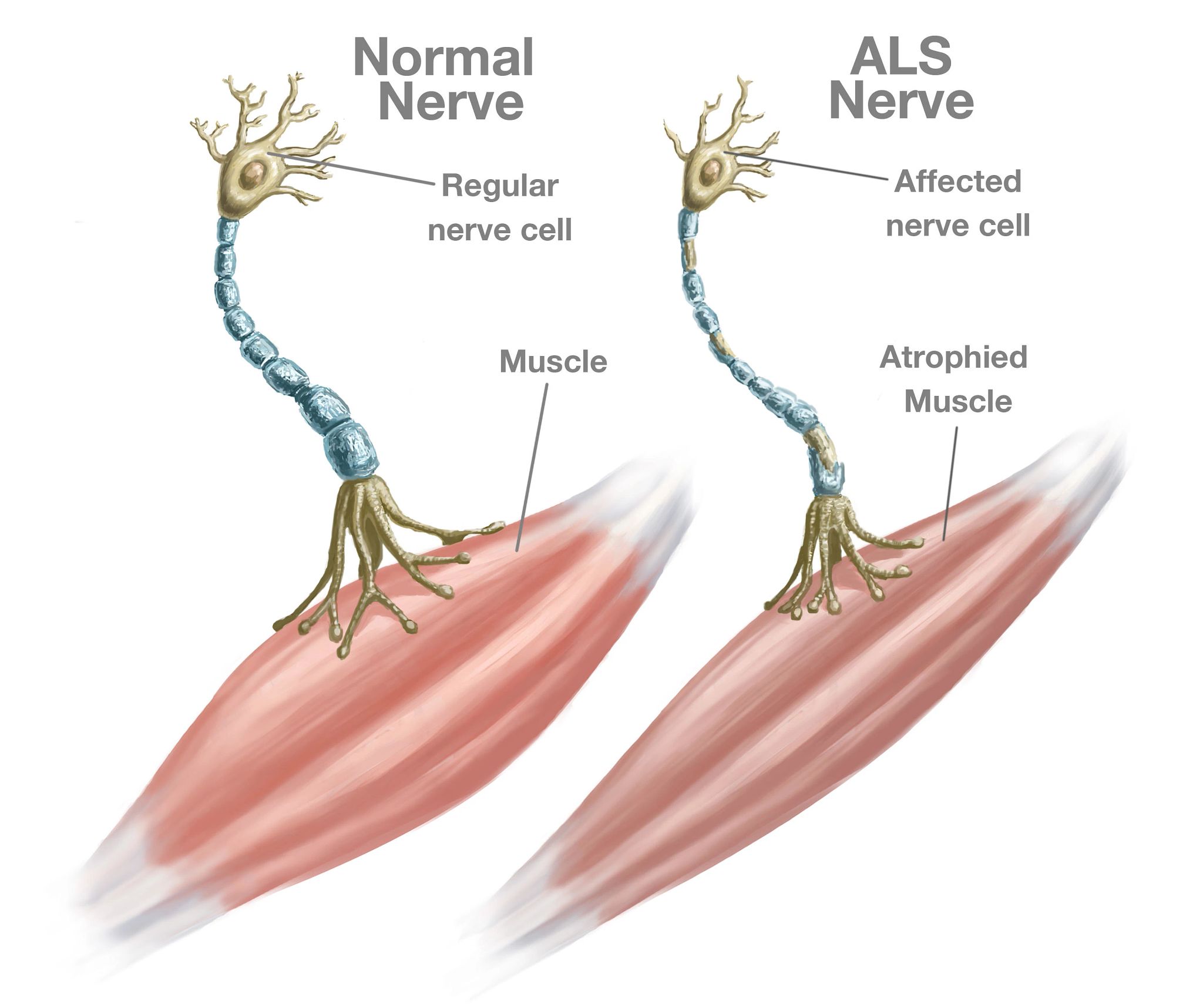
What is multiple sclerosis?
It’s an autoimmune disease that causes demyelination of axons. There is a decreased number of myelin-making cells. There are more females than males with MS. Immunosuppressants can help because they reduce inflammation.
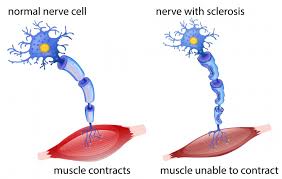
What is Myasthenia Gravis?
It’s caused by a decrease in acetylcholine receptors OR acetylcholine receptors that aren’t working right. This causes nerve impulses to not get through and causes unpredictable muscle weakness.